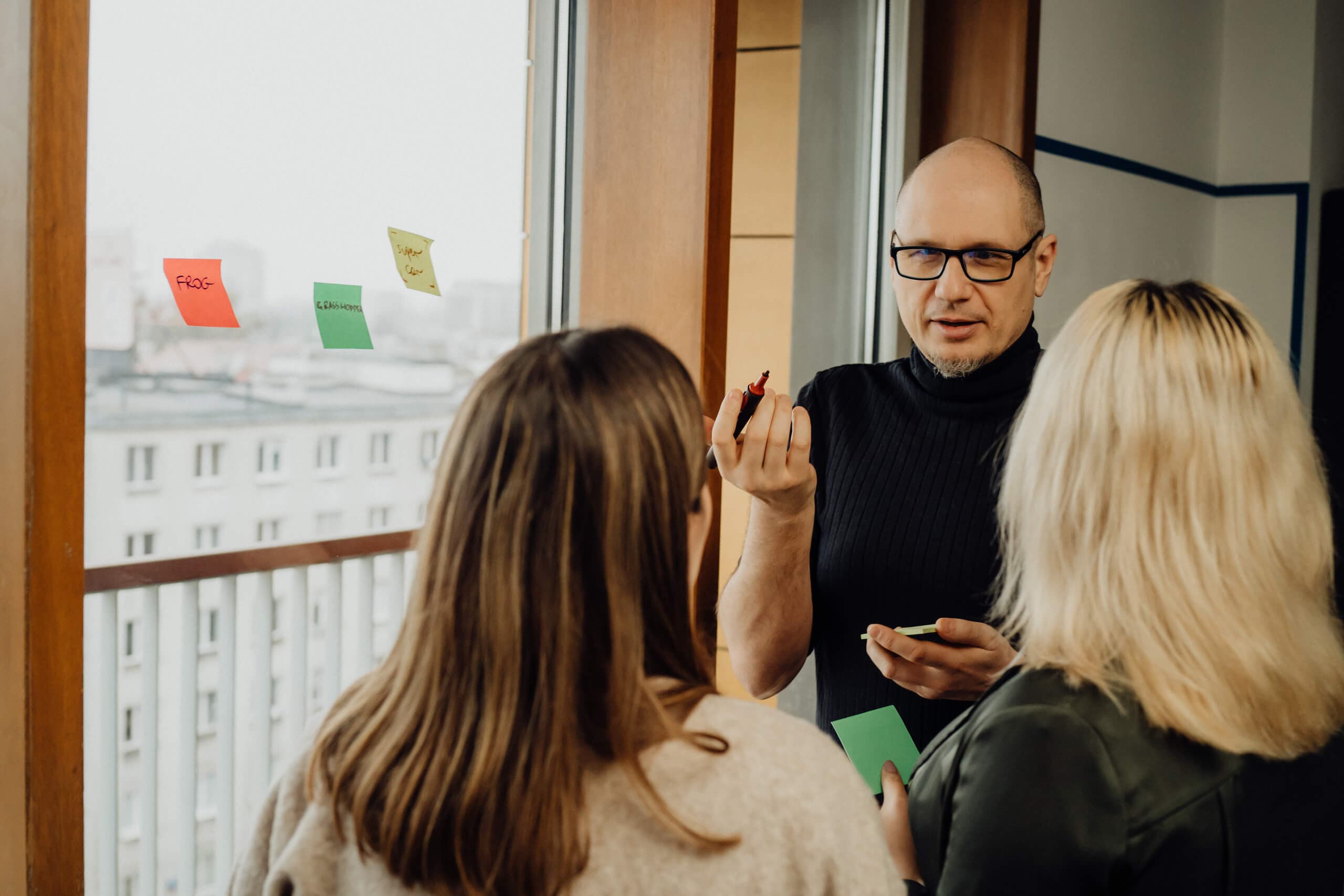🌍 All
About us
Digitalization
News
Startups
Development
Design
Minimum Viable Product (MVP) Development: Step-by-Step Guide
Marek Pałys
Nov 22, 2022・5 min read
Table of Content
Difference Between MVP and Full Product
MVP vs. Prototype vs. PoC: What's the Difference?
Take a Look at Our MVP Software Development Process
Successful MVPs: Selected MVP Development Success Stories by Startup House
MVP Development Costs
Frequently Asked Questions on MVP Development
How Startup House Can Help You Build an MVP
Conclusion
FAQs:
Nothing stands out more than the concept of a Minimum Viable Product (MVP). Through the lean startup methodology, MVPs are transforming the way startups and established companies alike bring their product ideas to market. But what exactly is an MVP? How does it differ from a full-fledged product or a prototype? Dive in to discover all about the MVP development process.
Difference Between MVP and Full Product
A Minimum Viable Product (MVP) is essentially a version of a new product that allows a team to collect the maximum amount of validated learning about customers with the least effort. It incorporates just enough features for early adopters to provide feedback. In contrast, a full-fledged product is a complete version with all the features designed for its target audience.
MVP vs. Prototype vs. PoC: What's the Difference?
MVP: Focused on delivering a functional product to understand user behavior and validate business hypotheses.
Prototype: A working model used to visualize the product concept, not necessarily functional.
PoC (Proof-of-Concept): Demonstrates the feasibility of a product idea or concept, without being a functional product.
Take a Look at Our MVP Software Development Process
At Startup House, we prioritize the MVP development process to test market demand, ensure the value proposition aligns with customer needs, and validate assumptions before committing significant resources.
Discovery and Idea Germination
We begin with user research and conceptualization. This phase focuses on defining the problem and determining the essential features for the MVP. It's about ensuring we understand the user's problem and the potential business opportunities that exist.
Steps to Develop a Successful MVP in Software Development
Define The Problem: It starts with identifying the key pain points of the target users.
User Research and Conceptualization: Here, we gather data about user interactions and behaviors to shape the MVP's core functionality.
MVP Development Project Planning: A project manager, along with a business analyst, maps out the MVP architecture design and user stories.
Proof-of-Concept and Rapid Prototyping (optional): Before diving into code-based MVP development, we might use no-code MVP development tools or rapid prototyping to visualize the MVP functionality.
MVP Development: This step involves developing software, focusing on core features. Our team of dedicated developers leverages an agile development approach, ensuring flexibility and adaptability.
MVP Launch and Further Iterations: Once the MVP is ready, we test the product with early adopters. We collect user feedback to refine and iterate the MVP. This iterative process ensures the MVP evolves into a successful product that resonates with its audience.
Successful MVPs: Selected MVP Development Success Stories by Startup House
Collaboration Software MVP Development for a Global Consulting Provider: Leveraging our software-based MVP expertise, we developed an innovative collaboration tool tailored to consulting needs.
A Residential Remodeler Transforms CX With a Mobile Solution Powered by InfoStride: Addressing user scenarios and pain points, this MVP proved successful in enhancing customer experience.
Built an All-in-One Outdoor Camp Planning Platform: Designed to improve the camping experience, we built this MVP considering user interactions and feedback.
MVP Development Costs
The costs of MVP development vary based on complexity, technology stack, and the development team's experience. But investing in MVPs typically yields enough future benefits, as they ensure money spent aligns with market demand and customer needs.
Frequently Asked Questions on MVP Development
How to Build an MVP in 5 Steps? Start by defining the problem, conducting market research, determining essential elements, and following the MVP development process.
How Much Does It Cost to Build a Minimum Viable Product? While variable, investing in MVPs usually ensures optimal use of resources and maximized returns.
What Does the Term MVP Stand For? MVP stands for Minimum Viable Product.
How Startup House Can Help You Build an MVP
Startup House boasts a proven track record in MVP development, from code-based to no-code MVPs for startups. With our in-depth knowledge and expertise, we ensure startups don't fail due to a lack of market validation. Let us help you bring your business idea to life while mitigating risks and maximizing potential returns.
Conclusion
Understanding the MVP development process and its nuances is crucial for startups and businesses looking to introduce new features or products. By focusing on the minimum features, businesses can test waters without overcommitting resources, validating business hypotheses, and ensuring they meet the real needs of their users.
With Startup House at your side, you can be confident that your MVP will not only be built with the highest standards but also with a keen understanding of market dynamics and user behavior. So, let's collaborate and bring your vision to life!
FAQs:
What is an MVP?
An MVP (Minimum Viable Product) is a product with the minimum features needed to be viable for initial users, used to validate a product idea with minimal resources.
How does an MVP differ from a full-fledged product?
An MVP contains only essential features to validate a product idea, while a full-fledged product is a complete version with all the planned features.
What's the purpose of an MVP?
An MVP helps in validating business hypotheses, understanding user behavior, and testing market demand before investing heavily in a full product.
Is a prototype the same as an MVP?
No, a prototype is a visual representation of a product idea, often non-functional, while an MVP is a functional, albeit simplified, version of the product.
How does PoC differ from MVP?
A PoC (Proof-of-Concept) demonstrates the feasibility of an idea without being a complete product, while an MVP is a basic functional version of the product.
Why is user feedback crucial for MVPs?
User feedback helps refine and iterate the MVP, ensuring it aligns with market needs and user expectations.
How can Startup House aid in MVP development?
Startup House offers comprehensive MVP development services, from user research and conceptualization to development and launch.
How do I know if my idea needs an MVP?
If you're looking to validate a business idea, test market demand, or understand user needs with minimal investment, an MVP approach is ideal.
What are the steps in the MVP development process?
The steps include defining the problem, user research, project planning, development, launch, and iterations based on feedback.
How much does MVP development cost?
Costs vary based on the complexity, technology used, and the experience of the development team but investing in MVPs ensures optimal use of resources.
How long does it take to develop an MVP?
Depending on its complexity and features, an MVP can take anywhere from a few weeks to several months.
Why is the MVP approach considered beneficial for startups?
MVPs allow startups to test their product ideas in the real market, reducing risks and ensuring alignment with user needs before heavy investment.
What is a no-code MVP?
A no-code MVP is developed using platforms and tools that don't require traditional coding, ideal for quick validation and iterations.
Does every software product need an MVP?
Not necessarily. While MVPs are beneficial for new product ideas, well-established products might not require an MVP for every update.
How do MVPs align with the lean startup methodology?
The MVP approach is central to the lean startup methodology, emphasizing learning from real user feedback and iterating quickly.
Can MVPs evolve into successful full products?
Absolutely. MVPs are designed to be iterated upon based on feedback, evolving into successful full products that meet market demands.
What should I consider when deciding the essential features for an MVP?
Focus on the core functionality that addresses the primary user problem and offers a unique value proposition.
Is user research necessary for MVP development?
Yes, user research ensures the MVP addresses genuine user pain points and market needs.
Can MVPs be developed for both mobile and web platforms?
Yes, MVPs can be developed for any platform, including mobile apps, web apps, and even desktop software.
How does Startup House ensure the success of an MVP?
Through extensive market research, user-centric design, agile development, and continuous feedback loops, ensuring MVPs resonate with their target audience.

 Don't miss a beat - subscribe to our newsletter
Don't miss a beat - subscribe to our newsletterYou may also  like...
like...

Mastering Declarative Programming: Essential Practices for Every Developer
Discover declarative programming essentials. This guide covers principles, tools, and best practices to simplify coding, enhance readability, and improve scalability.
Marek Pałys
Apr 16, 2024・11 min read

Understanding Event-Driven Programming: A Simple Guide for Everyone
Explore the essentials of event-driven programming. Learn how this responsive paradigm powers interactive applications with real-world examples and key concepts.
Marek Pałys
Apr 30, 2024・9 min read

Demystifying Procedural Programming: Simple Examples for All
Explore procedural programming with easy-to-follow examples and insights into its core principles. Learn how this step-by-step approach forms the basis of many programming paradigms.
Marek Pałys
Jul 05, 2024・10 min read




